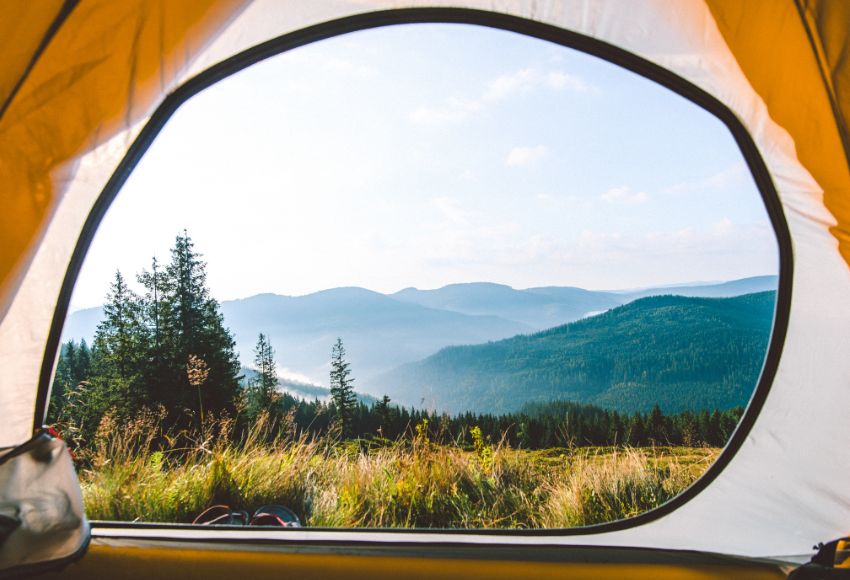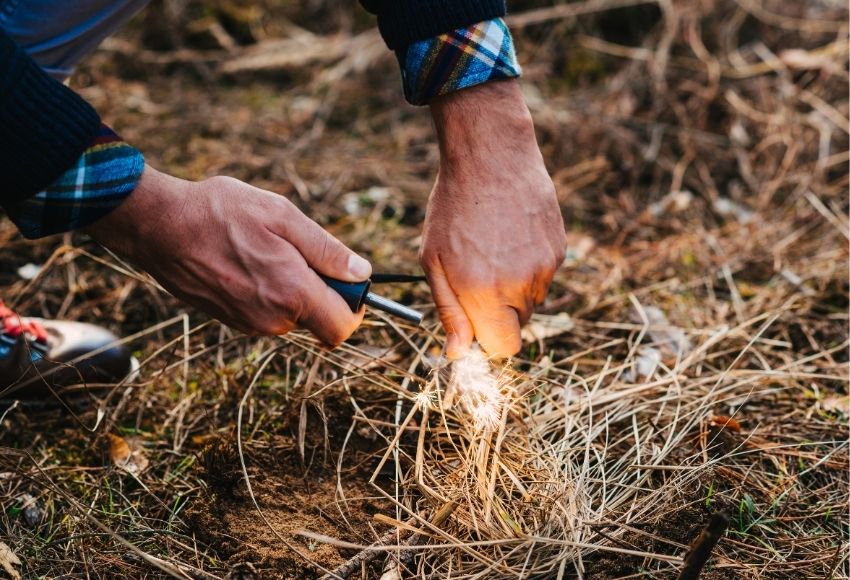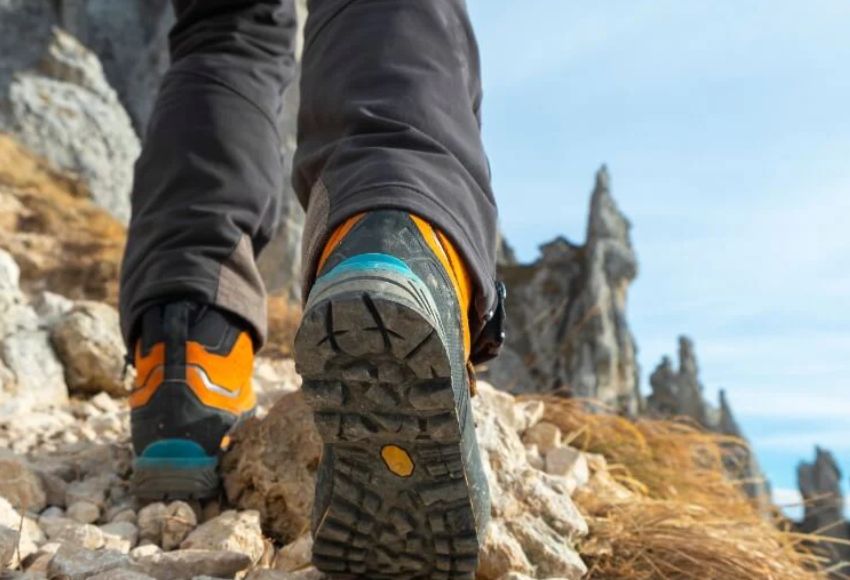Are you planning to sleep outside? Great idea! But before you pack your sleeping bag, it's a good idea to figure out how you want to sleep. A tent? A hammock? Just under the open sky? Or even a tent in your car? Each option has its pros and cons - and none is universally "best". It depends on where you're going, how you're traveling, how much you want to carry, what the weather will be like, and how much you want to be in touch with nature (or protected from it).
Let's compare these options - so you can choose the style that suits you.
Tent
A tent is a proven classic. Most outdoor enthusiasts reach for it as their first choice – and no wonder. It is suitable for almost any type of terrain, where you can find a sufficiently flat and safe area. It offers solid comfort even in worse conditions and protects against the elements and curious insects.
Advantages:
- Complete protection from wind, rain, insects and cold. Double-layer tents can handle even heavier downpours or adverse weather in the mountains.
- A sense of safety and privacy – you can change clothes, relax and have things under control.
- Versatility – tents can be pitched almost anywhere where there is enough space and a flat surface.
Disadvantages:
- Higher weight and volume – modern tents have become significantly smaller, but they still take up more space in your backpack than a hammock or bivouac.
- More complicated construction – especially in rain or wind, setting up a tent can be time-consuming and uncomfortable.
- Restrictions in certain locations – camping is often prohibited in protected areas.
Hammock
A lightweight, suspended bed between trees – that’s a hammock. Ideal for summer hikes through the forest, where you want to enjoy contact with nature while traveling light. However, you need suitable trees, and if you plan to sleep in the rain, you definitely can’t do without a tarp (waterproof sheet) and thermal insulation underneath (e.g. a sleeping pad or underquilt).
Advantages:
- Low weight and great compactness - it fits in a backpack pocket, which you will appreciate on longer routes.
- Speed of construction – two loops around the trees and you're set.
- A great choice for summer nights – airy sleeping in the forest will keep you cool even in the heat.
Disadvantages:
- Dependence on the environment – without trees you have no chance. Deserts, ridges or open countryside are unsuitable for a hammock.
- Worse insulation – without bottom insulation you will quickly get cold even on warmer nights.
- Not everyone is comfortable sleeping "in the air" - some people find swinging or the enclosed space of a mosquito net uncomfortable.
Bivouac
Bivouac means sleeping as simply as possible – with just a sleeping bag in the open air, or in a bivouac bag. It is a way to experience maximum closeness to nature and minimal stress. It is suitable for more experienced outdoor enthusiasts who know how to choose a place well and deal with the weather.
Advantages:
- Extremely light and compact – just take a sleeping bag and a waterproof bag or tarp, and you're ready to go.
- Intense contact with nature – you fall asleep under the stars and are woken up by the sunrise in the morning.
- Minimum equipment and construction – you don't have to assemble or transport anything.
Disadvantages:
- Almost no protection from the weather – rain, wind or insects can ruin the whole night.
- Risk of morning dew, humidity and discomfort – without the right choice of location and experience, it may not be pleasant.
- Not suitable for beginners – you can easily underestimate yourself and get wet or freeze.
Car tent (rooftop tent for car)
A car tent is a solution for those who like to travel by car and want a comfortable and quick overnight stay without having to look for a flat spot on the ground. The tent is spread out on the roof of the car and provides safe and elevated shelter. It is often used on road trips or expeditions.
Advantages:
- Quick installation – you'll be unpacked and ready to sleep in just a few minutes.
- Comfortable sleeping away from the damp ground and bugs – more like literally on the roof of the world.
- Great for long trips – you don't have to look for a place for a tent every time, all you need is a flat area for your car.
Disadvantages:
- High purchase price – carports are not cheap.
- Limited car mobility – when you have your tent set up, you can't just drive away.
- The necessity of a car with a roof rack – it's not for everyone, it requires a solid roof and some technical prowess.
When and where to use what?
According to the weather:
- Tent – a versatile choice for most conditions, including wind, rain and cold.
- Hammock – a great choice for summer nights in the forest, when it's dry.
- Bivouac – exclusively in clear and warm weather, ideally without wind.
- Car tent – very resistant to adverse weather conditions if you close it properly.
According to terrain:
- Hammock – ideal for forest areas with plenty of trees.
- Tent – suitable for meadows, mountains or campsites with flat areas.
- Bivouac – in dry, open places or ridges with a nice view.
- Motorhome – campsites, parking lots, gentle terrain near civilization.
According to the legal framework:
- Camping – often prohibited in national parks and protected areas outside of official campsites.
- Bivouac – sometimes "tolerated", but legally it is a gray area.
- Caravans – often fall under the category of "sleeping in a car", which is legal in some countries, prohibited in others.
- Hammock – usually less noticeable and less problematic as long as you don't leave any marks or damage trees.
General equipment recommendations for beginners
If you're just starting out with sleeping outside, the key is not to make it unnecessarily complicated - leave room for mistakes and experiences.
What to have, no matter which option you choose:
- A quality sleeping bag with appropriate temperature rating (consider a margin compared to the forecast)
- Insulation pad / sleeping pad , also for hammocks or under bivouacs
- Rain protection – a tarp, a tarp, or at least a poncho
- Basic light (headlamp) , because the darkness in nature is really dark
- Dry bag or waterproof bag for things when it rains
- Multifunctional scarf or hat – even in summer it can be cold at night
- Something warm for the evening (sweatshirt, down jacket), even if the sun is scorching during the day
The most important thing is: go with what you have, and you will find the magic in simplicity. You don't need ultralight gear for ten thousand right away. You will gradually find out what suits you - and you will adjust your equipment accordingly.
|
Variant |
Weight (approx.) |
Price (from) |
Comfort |
Weather |
Suitable environment |
|---|---|---|---|---|---|
|
Tent |
1.5–3.0 kg |
from 2,000 CZK |
High |
Any |
Meadows, campsites, mountains |
|
Hammock + tarp |
0.8–1.5 kg |
from 1,500 CZK |
Medium |
Summer, spring |
Forests, trees |
|
Bivouac |
0.3–1.0 kg |
from 700 CZK |
Low |
Just drought |
Rocks, ridges, drought |
|
Caravan |
40–70 kg |
from 20,000 CZK |
High |
Any |
Travel, car trips |
Sleeping in nature can be an extreme experience, a relaxation and a lifestyle. Whether you love a simple bivouac under the stars, the comfort of a tent, the freedom of a hammock or the comfort of a rooftop tent, it's always the same: being outside, alone or with loved ones, and turning off the world around you for a while.
There is no universal choice – only the best one for your specific conditions.




Leave a comment
All comments are moderated before being published.
This site is protected by hCaptcha and the hCaptcha Privacy Policy and Terms of Service apply.